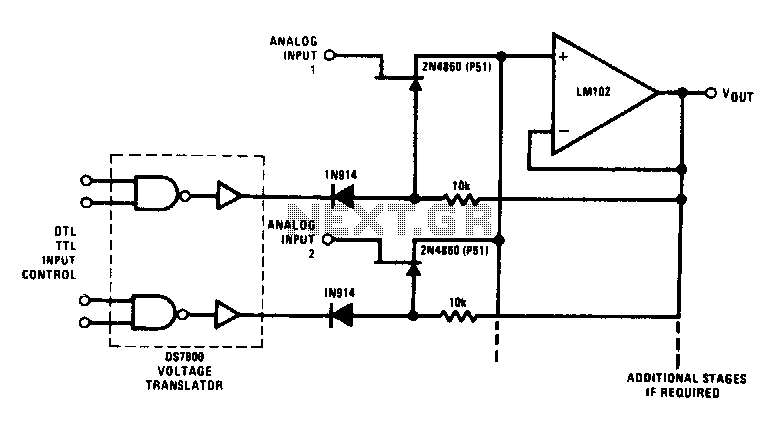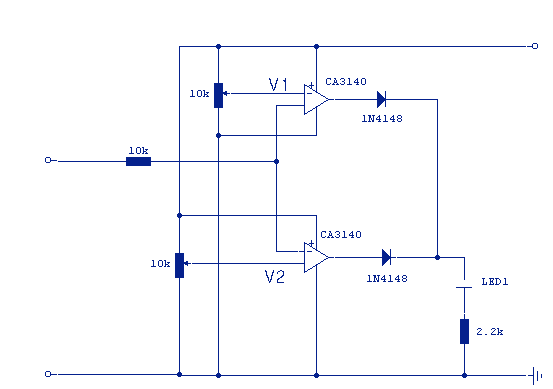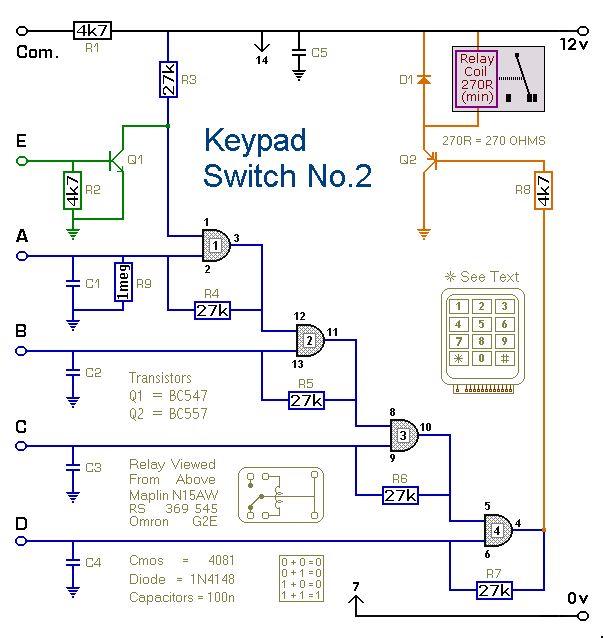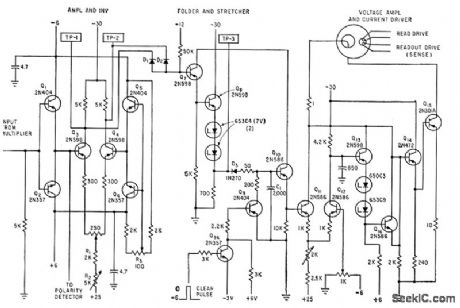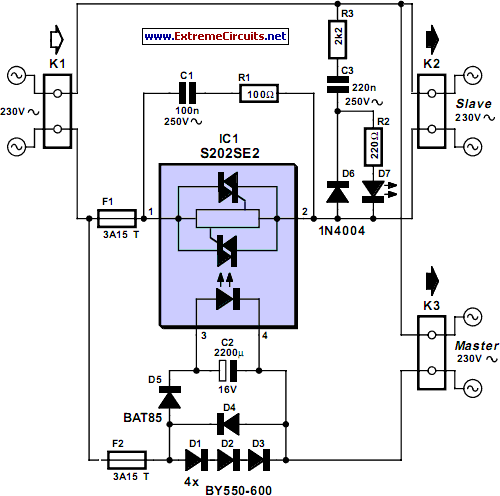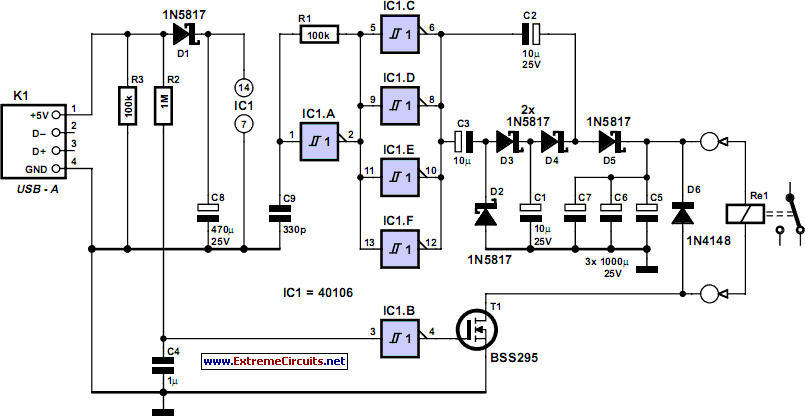
UNDERVOLTAGE DISCONNECT SWITCH
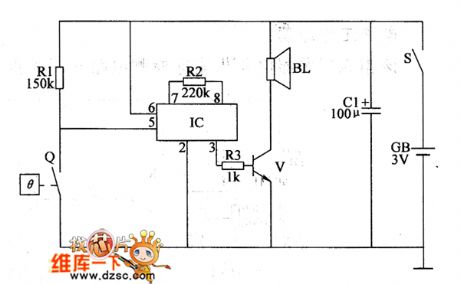
The TL494 serves as the core component for a PWM driver and protection circuit operating at a frequency of 50 kHz. The output voltage of 115V is stepped down and isolated before being sent to the TL494 error amplifier A1, where it is processed as an RMS signal through the AD536 for closed-loop voltage control. The push-pull inverter circuit's current is relayed to the control panel via P7 after passing through a current transformer sampler, subsequently reaching the TL494 error amplifier A2 for current-loop control. The output driver signal from the TL494 is amplified through P6 before being directed to the main board. The atmospheric pressure regulating equipment employs a tracking control circuit utilizing the photosensitive battery BPY11. When both batteries receive light, the input transistor does not conduct, resembling two phototransistors in a cut-off state, resulting in no current to the electric motor. Conversely, if a photosensitive cell is shielded from light, the corresponding half-amplifier activates, allowing the electric motor to rotate left or right. A diode group at the final stage protects the transistor from damage. The photosensitive signal can be adjusted using a 10MΩ potentiometer. The entire circuit includes a relaxation oscillator, light control pulse counting/decoding circuit, SCR motor speed control circuit, music sound circuit, and AC step-down rectifier circuit. Under bright light conditions, the control circuit activates a fan to generate natural wind while playing 16 well-known songs. The infrared receiving and motor driver circuit is illustrated in figure 1; when unoccupied, the infrared receiver detects an infrared beam from the opposite side. The installation can be secured to a wall using a 60mm guide tube that precisely holds the infrared tube (as shown in figure 3), positioned at an appropriate height to aim at the opposite receiver, minimizing interference. The signal is amplified and filtered by BG6, BG7, and CR to produce a low-level output, while BG5 remains cut off. The Hualing BCD182 refrigerator control circuit is depicted in the figure, with button switches 1SB and 2SB controlled by the refrigerator and freezer doors, respectively. Upon closing the doors, the button switches also close; when opened, they cut off the circuit. When power is applied, the timing motor MT, fan electromotor M1, and compression motor M2 operate, initiating the refrigeration process. The circuit principle indicates that 220V AC supplies a stable 12V operating voltage to the switch integrated circuit through components C1, VD1, and DW1, while the voltage sampling circuit consists of VD3, R2, and RP1. If the city electricity voltage is normal, DW2 remains non-conductive, keeping the TWH8778's pin-5 voltage below 1.6V, preventing relay J from closing. Conversely, if the voltage exceeds normal levels, DW2 conducts, raising the TWH8778's pin-5 voltage to 1.6V, activating the IC, which outputs a high level at pin-3, causing the relay to close and cutting off power to the electrical appliance to prevent damage. The TDA5100 is a UHF radio transmitting circuit designed by Siemens, known for its complex internal structure, comprehensive functionality, high sensitivity, wide output signal amplitude, minimal external components, and cost-effectiveness, making it a superior performance transmitting circuit.
The described circuit encompasses several critical functionalities, each contributing to the overall operation and efficiency of the system. The use of the TL494 as a PWM driver is particularly noteworthy, as it allows for precise control over the output voltage and current, essential for maintaining system stability and performance. The integration of error amplifiers A1 and A2 facilitates closed-loop control, ensuring that the system can adapt to variations in load and input conditions.
The tracking control circuit employing the BPY11 photosensitive batteries highlights an innovative approach to managing environmental interactions. By utilizing light-sensitive components, the circuit can autonomously adjust the operation of the electric motor based on ambient light levels, thus optimizing energy consumption and enhancing user experience.
Furthermore, the inclusion of protective measures, such as the diode group for transistor protection and the relay mechanism for power cut-off during voltage surges, underscores the design's commitment to reliability and safety. The incorporation of a music sound circuit adds an additional layer of functionality, allowing for user engagement through audio output.
Overall, the schematic illustrates a well-thought-out design that integrates various electronic components to achieve efficient control and operation of multiple systems, from refrigeration to environmental monitoring and audio playback. The combination of advanced components like the TDA5100 for radio transmission also indicates the potential for expanding the circuit's capabilities in communication applications.In the figure, the TL494 is used as the core to form the PWM driver and protection circuit, and the changing frequency is 50kHz. 115V output voltage is sent to P8 after stepping-down and isolating, then it is sent to TL494 error amplifier A1 after getting RMS by passing AD536, and it is used as the system`s closed-loop voltage control.
The current of push-pull inverter circuit is sent to control panel to do signal processing by P7 after passing current transformer sampler, then it is sent to the TL494 error amplifier A2 as the current-loop control system. TL494 outputs driver signal is amplified by passing P6, then it is sent to the main board. (View) The atmospheric pressure regulating equipments always use the tracking control circuit which is composed of the photosensitive battery BPY11.
When both of the two photosensitive batteries are irradiated by the light, there is no base current in the input transistor, they are similar to two phototransistors which are in the cut-off state, the electric motor has no current. If a photosensitive cell is not irradiated by the light, the corresponding edge half-amplifier will conduct, the electric motor turns left or right.
The last stage diode group can be used to protect the transistor to prevent the damage. The photosensitive signal can be adjusted by the 10M © potentiometer. (View) The circuit is as shown in the figure. It is composed of the relaxation oscillator, the light control pulse counting/decoding circuit, the SCR control motor speed control circuit, the music sound circuit and the AC step-down rectifier circuit. Under the strong light, the control circuit starts the fan to blow out the natural wind, and it broadcasts 16 world famous songs.
(View) The infrared receiving and motor driver circuit is as shown in figure 1, when there is no one, the infrared receiver receives the infrared beam which is from the other side. You can fix it one the wall by using the 60mm guide tube which can insert the infrared tube exactly (figure 3), the height is appropriate, and it aims at the opposite receiver, so the infrared ray is not easy to interfere another receiver.
The installation method is as shown in figure 4. The signal is amplified and filted by BG6, BG7 and CR to output the low level, the BG5 cuts off. (View) The Hualing BCD182 refrigerator control circuit is as shown in the figure. The button switches 1SB and 2SB are controlled by the refrigerating door and freezer dorr of the refrigerator respectively. When the door closes, the button switch closes too; When the door opens, the button switch cuts off. When the power is connected, the timing motor MT, the fan electromotor M1 and the compression motor M2 get power to operate.
The refrigerator starts to refrigerate. The current loop is: (View) The circuit principle is as shown in the figure. The 220V city electricity supplies the stable 12V operating voltage to the switch integrated circuit through the C1, VD1 and DW1, the partial voltage sampling circuit is composed of the VD3, R2 and RP1. When the city electricity voltage is normal, the DW2 can not conduct, the operating voltage of the TWH8778`s pin-5 is lower than 1.
6V, the relay J will not close, the city electricity supplies power to the socket CZ through J 1; when the city electricity voltage is higher than the normal value, the DW2 is conducted, the electric potential of the TWH8778`s pin-5 rises to 1. 6V, the IC turns, the pin-3 outputs the high level, the relay closes, the power supply of the electrical appliance is cut off to avoid the damage.
(View) The TDA5100 is designed as the Uhf radio transmitting circuit which is produced by the Siemens company, the internal structure is complex, the function is perfect, the sensitivity is high, the output signal amplitude is wide, the external components are few, the price is cheap, it is the superior performance transmitting circuit. (View) As the figure shows, it 🔗 External reference
The described circuit encompasses several critical functionalities, each contributing to the overall operation and efficiency of the system. The use of the TL494 as a PWM driver is particularly noteworthy, as it allows for precise control over the output voltage and current, essential for maintaining system stability and performance. The integration of error amplifiers A1 and A2 facilitates closed-loop control, ensuring that the system can adapt to variations in load and input conditions.
The tracking control circuit employing the BPY11 photosensitive batteries highlights an innovative approach to managing environmental interactions. By utilizing light-sensitive components, the circuit can autonomously adjust the operation of the electric motor based on ambient light levels, thus optimizing energy consumption and enhancing user experience.
Furthermore, the inclusion of protective measures, such as the diode group for transistor protection and the relay mechanism for power cut-off during voltage surges, underscores the design's commitment to reliability and safety. The incorporation of a music sound circuit adds an additional layer of functionality, allowing for user engagement through audio output.
Overall, the schematic illustrates a well-thought-out design that integrates various electronic components to achieve efficient control and operation of multiple systems, from refrigeration to environmental monitoring and audio playback. The combination of advanced components like the TDA5100 for radio transmission also indicates the potential for expanding the circuit's capabilities in communication applications.In the figure, the TL494 is used as the core to form the PWM driver and protection circuit, and the changing frequency is 50kHz. 115V output voltage is sent to P8 after stepping-down and isolating, then it is sent to TL494 error amplifier A1 after getting RMS by passing AD536, and it is used as the system`s closed-loop voltage control.
The current of push-pull inverter circuit is sent to control panel to do signal processing by P7 after passing current transformer sampler, then it is sent to the TL494 error amplifier A2 as the current-loop control system. TL494 outputs driver signal is amplified by passing P6, then it is sent to the main board. (View) The atmospheric pressure regulating equipments always use the tracking control circuit which is composed of the photosensitive battery BPY11.
When both of the two photosensitive batteries are irradiated by the light, there is no base current in the input transistor, they are similar to two phototransistors which are in the cut-off state, the electric motor has no current. If a photosensitive cell is not irradiated by the light, the corresponding edge half-amplifier will conduct, the electric motor turns left or right.
The last stage diode group can be used to protect the transistor to prevent the damage. The photosensitive signal can be adjusted by the 10M © potentiometer. (View) The circuit is as shown in the figure. It is composed of the relaxation oscillator, the light control pulse counting/decoding circuit, the SCR control motor speed control circuit, the music sound circuit and the AC step-down rectifier circuit. Under the strong light, the control circuit starts the fan to blow out the natural wind, and it broadcasts 16 world famous songs.
(View) The infrared receiving and motor driver circuit is as shown in figure 1, when there is no one, the infrared receiver receives the infrared beam which is from the other side. You can fix it one the wall by using the 60mm guide tube which can insert the infrared tube exactly (figure 3), the height is appropriate, and it aims at the opposite receiver, so the infrared ray is not easy to interfere another receiver.
The installation method is as shown in figure 4. The signal is amplified and filted by BG6, BG7 and CR to output the low level, the BG5 cuts off. (View) The Hualing BCD182 refrigerator control circuit is as shown in the figure. The button switches 1SB and 2SB are controlled by the refrigerating door and freezer dorr of the refrigerator respectively. When the door closes, the button switch closes too; When the door opens, the button switch cuts off. When the power is connected, the timing motor MT, the fan electromotor M1 and the compression motor M2 get power to operate.
The refrigerator starts to refrigerate. The current loop is: (View) The circuit principle is as shown in the figure. The 220V city electricity supplies the stable 12V operating voltage to the switch integrated circuit through the C1, VD1 and DW1, the partial voltage sampling circuit is composed of the VD3, R2 and RP1. When the city electricity voltage is normal, the DW2 can not conduct, the operating voltage of the TWH8778`s pin-5 is lower than 1.
6V, the relay J will not close, the city electricity supplies power to the socket CZ through J 1; when the city electricity voltage is higher than the normal value, the DW2 is conducted, the electric potential of the TWH8778`s pin-5 rises to 1. 6V, the IC turns, the pin-3 outputs the high level, the relay closes, the power supply of the electrical appliance is cut off to avoid the damage.
(View) The TDA5100 is designed as the Uhf radio transmitting circuit which is produced by the Siemens company, the internal structure is complex, the function is perfect, the sensitivity is high, the output signal amplitude is wide, the external components are few, the price is cheap, it is the superior performance transmitting circuit. (View) As the figure shows, it 🔗 External reference
